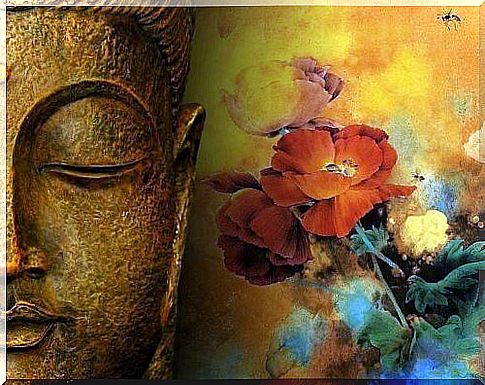The Word Namasté: Origins And Meaning

If you have entered the fantastic world of meditation, you will surely know the word namasté . This term so used in meditation, and also in some yoga disciplines, has a very deep and spiritual meaning, which you need to know to know what we are talking about.
Let’s find out what lies behind the word namasté , when and why it is used.
The origin of the word namasté

The word “Namasté” is a little known term because it comes from distant lands and is a form of greeting.
The origin of this word is Indian and belongs to the Sanskrit language, one of those considered sacred by those who profess Hinduism.
This term is accompanied by a particular gesture, known as a mudra . When pronouncing the word “namasté”, the palms of the hands must be joined in front of the chest. A sign of absolute respect for the interlocutor who greets you.
This is not surprising because, if we analyze the word etymologically, we will realize that namas is a noun that can be translated as “greeting” or “reverence”; while té is a pronoun meaning “to you”.
Spirituality in meditation and yoga

In this way, we can reach a state of connection with the whole, in which the ego dissolves.
In yoga and meditation, the term “namasté” is used to express humility, not only with respect to any interlocutor, but towards the world, the universe …
There are some experts who have dedicated themselves to studying this word, coming to the conclusion that “namas” could also mean “nothing about me”.
That state in which we are nothing and at the same time everything, in which we connect with the world, but our ego rests. The mind is calm, we are calm, it is almost a state of trance.
The word namasté resides in our divine essence

According to the tradition in which the term “namasté” was born, it is believed that a divine essence resides in us which, at times, we must discover thanks to the implementation of practices such as those we have just talked about.
When we are in our ideal state, alert and calm at the same time, we join hands, bow and say the word “namasté”.
In this way, we make room for the divine essence that resides in us, but also in others and in what surrounds us.
It could be compared to the Catholic practice of kneeling and prostrating as a sign of humility and respect for God.
In this case, the word “namasté” can be directed towards a god, towards the universe, towards another person, etc. Nonetheless, it is not just a sign of respect for others, but also for oneself. We are two divine essence who recognize each other and greet each other with respect.
Yoga and meditation
Now you know the meaning of this word and you can say it by internalizing everything it brings, feeling the well-being it generates every time it is pronounced during a yoga or meditation class.
More and more people are making the most of all the potential that is obtained by dedicating a few minutes to these practices every day.
In doing so, we bring calm and tranquility to this noisy and busy world we live in.
The constancy and knowledge of the meaning of this strange word will allow us to take full advantage of the yoga and meditation sessions that we will carry out starting from this moment.
Main image courtesy of © wikiHow.com









